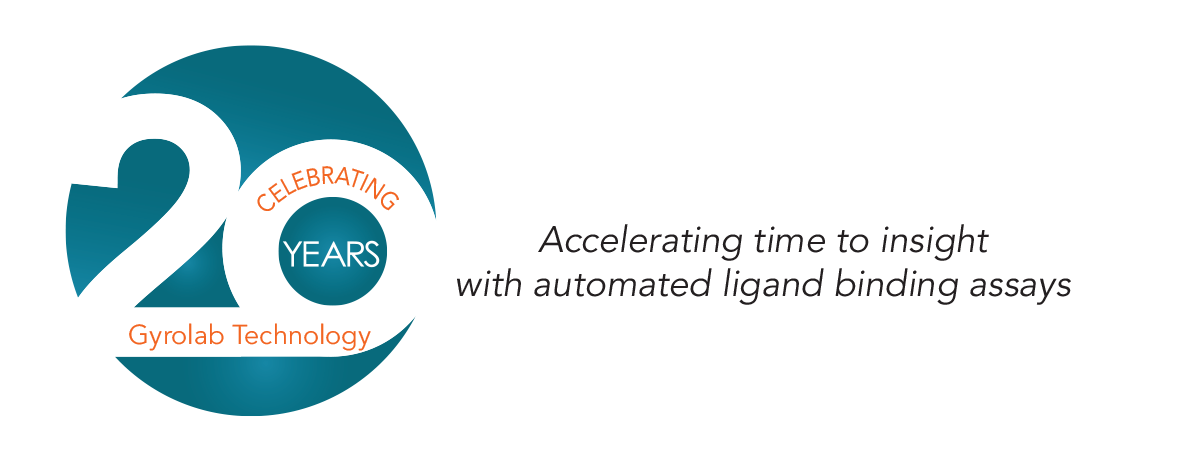Celebrating 20 years of a remarkable Gyrolab journey!

It was 20 years ago that the Gyrolab® Workstation and Gyrolab Bioaffy™ 200 CD made their first appearance at the 2003 Drug Discovery Technology (DDT) meeting in Boston. This new bioanalytical platform offered breakthrough technology based on microfluidic flow-through immunoassays conducted on a CD, fully automating the manually tedious sandwich immunoassay processing1.
This technology was immediately recognized as a unique and valuable asset by major pharmaceutical companies for reducing both sample volume and hands-on time for ELISAs measuring biotherapeutic in complex matrices, generating high-quality results in one hour of automated walkaway time.
Since then, Gyros Protein Technologies has continuously expanded the capabilities and the application readiness of the platform. Introducing the 5-CD Gyrolab xP and later Gyrolab xPand offered high throughput and flexibility as platform options. The single CD Gyrolab xPlore™ was then introduced as a great option for labs preferring an instrument with a smaller footprint. From an assay performance perspective, the Gyrolab Bioaffy CD family was extended to include a broad range of sample volumes from 20 to 4000 nL, ideal for a wide range of applications.
Customer input drove software updates to keep pace with new applications and evolving industry regulatory requirements, and Gyrolab software is currently designed with 21 CFR Part 11 in mind. The company continues to involve customers in implementing software improvements to meet new requirements and assay demands.
Application flexibility propelled Gyrolab platform from bioanalysis to bioprocess labs where it has been adopted for use in product titer and impurity analysis for antibody-based therapeutics and both lentiviral and AAV based gene therapy viral vectors.
20 years of the evolution and expansion of kits milestones
- Protein A to AAVX: The Protein A kit (2011) to measure biotherapeutic purification impurities led to emerging gene therapy applications and the release of the Gyrolab AAVX Titer Kit in 2020
- Collaboration for excellence: collaboration with Cygnus Technologies (2021) led to the development of industry-standard impurity analysis reagents
- Constant evolution: The years 2022 and 2023 saw the launch of kits targeting human cytokine biomarkers and generic ADA screening. A total of 21 ready-to-use kits and solutions are now available.








The company itself has also kept pace. Gyros AB was formed in 2000, and the company merged with Protein Technologies Inc. to add peptide synthesizer product lines and created Gyros Protein Technologies in 2016. In 2019, Gyros Protein Technologies became a member of the Mesa Labs, Inc. family as the Biopharmaceutical Division.
From the initial launch in 2003 until today, our customers in pharmaceutical, biotech, and contract research organizations (CROs) have solidified the use of the Gyrolab platform as a must-have technology with a growing use in contract development manufacturing organizations (CDMOs). From a few installations 20 years ago until today, Gyrolab has reached labs worldwide.
Looking forward, the company plans to continue to respond to our customers’ needs for robust and reliable automated immunoassays with new kits, software features, and new applications, meeting the challenges of a dynamic scientific market.
1. Mats Inganäs et.al., Integrated Microfluidic Compact Disc Device with Potential Use in Both Centralized and Point-of-Care Laboratory Settings, Clin Chem. 2005 Oct;51(10):1985-7. doi: 10.1373/clinchem.2005.053181